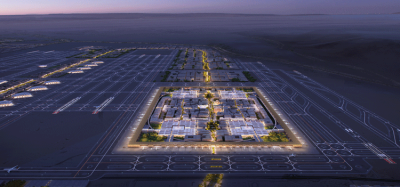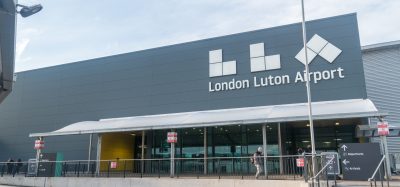Innovation, sustainability and passenger experience at Aena
- Like
- Digg
- Del
- Tumblr
- VKontakte
- Buffer
- Love This
- Odnoklassniki
- Meneame
- Blogger
- Amazon
- Yahoo Mail
- Gmail
- AOL
- Newsvine
- HackerNews
- Evernote
- MySpace
- Mail.ru
- Viadeo
- Line
- Comments
- Yummly
- SMS
- Viber
- Telegram
- Subscribe
- Skype
- Facebook Messenger
- Kakao
- LiveJournal
- Yammer
- Edgar
- Fintel
- Mix
- Instapaper
- Copy Link
Posted: 29 March 2023 | Alberto Taha Barriuso | No comments yet
To become international leaders in digital transformation, airport operator, Aena, continues to focus on three key pillars: optimising the passenger experience, increasing operational efficiency, and developing sustainable mobility. At the World Aviation Festival 2022 in Amsterdam, Alberto Taha Barriuso, Chief of Innovation at Aena, explains more.


Tell me about the airports in your network
Aena manages 46 airports across Spain but also 35 others worldwide; you could say that our network is rather vast. Some of our airports welcome less than half a million passengers per year and then, on the other side, we have our busier airport hubs like Adolfo Suárez Madrid‑Barajas Airport. The future of our airports heavily relies on the power of the city. Our major airports Madrid Airport and Josep Tarradellas Barcelona-El Prat Airport are only 15 minutes, via underground, from their city centres. The main objective is to integrate this seamless and multimodal travel as part of the passengers’ airport journey and experience.
How do you provide a personalised passenger experience?
The future for the network is to reduce passenger time within the airport and moving procedures online, so that the passenger’s airport journey officially begins at home.
Part of our organisation’s new direction is three main pillars: innovation, sustainability, and passenger experience. We are uniting all our business units to reinsure that the passenger process is not complicated, and together, alongside our security, assistance, customer service experts, we are creating a simple passenger journey that is seamless at every stage of the airport journey. Across our airports, we are doing everything we can to understand our passengers, through collecting and visiting data, to recognise who they are, what they desire and where they arrive from, travelling to and so forth.
What new technologies or digitalisation have you invested in to improve the passenger experience?
In the first quarter of 2023, we plan to launch a critical biometric project, which will transform the overall passenger experience, from the moment said passenger is enrolled onto our airports’ system. Biometric technology will be enrolled at online check-in, through to the security checkpoint and boarding stages. Eventually, this technology will be extended to other airport stages like baggage drop and claim.
This is one of the most exciting future developments and enrolments across the airport network. Biometric and contactless technology is the future. Eventually, passengers, at their own discretion, can share details with airports so that they will be recognised and able to travel or access the airport, through our iPhones.
Aena is beginning to implement chat bots for passenger service. Since the COVID-19 pandemic, digitalisation within airports has become essential, but is the human touch still crucial?
We are integrating new technologies to ensure the airport journey is improved and shorter. However, at all stages of the passenger journey, when things do not go as planned, we need human interaction and airport staff to attend to their needs. So, we need to manage the balance of increasing efficiency and reducing costs to improve the passenger process, yet we need people to interact with the customers in order to develop our knowledge and improve the systems.
What would you advise emerging airports to capitalise on the most?
In innovation, the future of business is collaboration, collaboration, collaboration. As a smaller, emerging airport, if you are not part of a larger airport network like Aena, communicate with larger or medium-sized airports. Even larger organisations, such as Aena, continue to communicate and keep open discussions with other companies, airports, airlines because, in the short‑term, you can achieve your goals much faster.
What upcoming trends are on your watchlist?
In the medium-term, sustainability and the climate crisis is the main challenge the aviation sector must solve. The future must be sustainable, or we will not be. But this the largest challenge because we need and want the world to travel, and we know people love travel – this was very evident after the first pandemic and the swift return of passenger traffic. We must find ways to blend the balance between upkeeping passenger appetite and accommodating sustainable changes.
What sustainability initiatives are already in place across the network?
Aena became one of the first within the airport sector to commit to a Climate Action Plan, with the goals to be a carbon ‘Neutral’ airport by 2026 and ‘Net Zero’ by 2040, which is a decade before the universal Airports Council International agreement of ‘Net Zero by 2050’. We have made strong investments, around €500 million and €300 million to support the implementation of renewable or, specifically, thermal solar energy across the entire airport network. Particularly, throughout our Spanish airports, as we have plenty of space and sun.
What is keeping you awake at night?
Being in innovation, that is a difficult question to answer. We work with a lot of new technologies, and this is amazing. From biometric technologies, computer vision, to drones, which in the short‑term could be incredible to the urban air mobility (UAM) world. UAM will change the sector forever. I am really excited with the product that we have developed to support start-up companies and demonstrate the great solutions smaller organisations can provide for challenges faced by the rest of the sector.


Issue
Related topics
Biometrics, Contactless / Touchless technology, Digital transformation, New technologies, Operational efficiency, Passenger experience and seamless travel, Sustainability, Sustainable development
Related airports
Adolfo Suárez Madrid-Barajas Airport (MAD), Josep Tarradellas Barcelona-El Prat Airport (BCN)


















